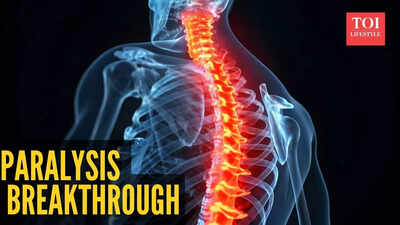ARTICLE AD BOX

For decades, spinal cord injuries (SCI) have represented one of medicine’s most devastating and irreversible conditions, often leaving patients paralysed for life. Now, a breakthrough study by researchers at the University of California San Diego (UCSD) is offering new hope. Using advanced bioinformatics tools, the team has identified an existing drug, Thiorphan, that shows remarkable potential to regenerate damaged nerve cells in the spinal cord, a discovery that could one day transform the treatment of paralysis.Through a combination of computational biology and regenerative neuroscience, scientists have discovered that Thiorphan can stimulate nerve regrowth and restore motor function in animal models. Although still in pre-clinical stages, this finding marks a pivotal step toward therapies that may one day reverse paralysis.
The challenge of spinal cord regeneration
The human spinal cord has limited ability to repair itself after injury. While nerves in the peripheral nervous system can regenerate to some extent, the central nervous system (CNS), which includes the brain and spinal cord, lacks the same capacity.
This makes SCI recovery extremely difficult, often resulting in lifelong disability. Researchers have long sought ways to reawaken the body’s dormant repair mechanisms, but success has been limited until now.The UCSD team turned to bioinformatics, using large molecular databases and computational algorithms to analyse how genes behave during nerve regeneration. They identified specific genetic patterns linked to neuron growth and cross-referenced these with known drugs.
Thiorphan, a compound previously tested in humans for non-neurological uses, emerged as a top candidate because it triggered a similar gene activation profile associated with nerve repair.
Testing the drug on human neurons
A major technical breakthrough came when scientists managed to grow adult human brain cells in the lab, a notoriously difficult task. When exposed to Thiorphan, these neurons displayed enhanced neurite outgrowth, the process by which nerve fibres extend and reconnect.
This provided direct evidence that the drug could stimulate regenerative processes in human neural tissue, not just in animal cells.To validate their findings, researchers tested Thiorphan on rats with spinal cord injuries. The results were striking: the treated animals showed a 50% improvement in fine motor function, and when combined with neural stem cell transplants, recovery rates doubled. This synergy between drug therapy and cell transplantation suggests that a multi-pronged approach could be the key to effective spinal cord repair.Thiorphan’s previous safety record in humans could accelerate its path to clinical testing for spinal injuries. This approach, repurposing old drugs using modern computational tools, represents a faster, more efficient model for drug discovery. Instead of starting from scratch, scientists can use gene expression data to identify new uses for existing compounds.
A turning point for spinal injury treatment
Lead researchers, including neuroscientist Erna van Niekerk, Ph.D., and Professor Mark H. Tuszynski, believe this marks a shift in how we approach neurological repair. By blending AI-driven bioinformatics, gene sequencing, and regenerative cell therapy, they have created a blueprint for future treatments. While human trials are still ahead, the results provide a glimpse into a future where paralysis may no longer be permanent

 3 hours ago
3
3 hours ago
3








 English (US) ·
English (US) ·